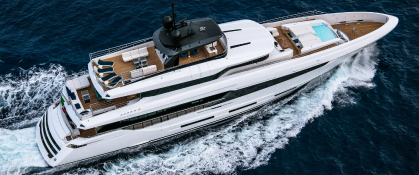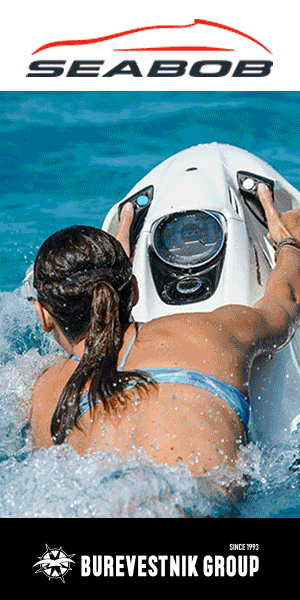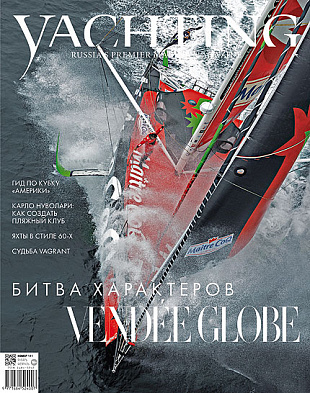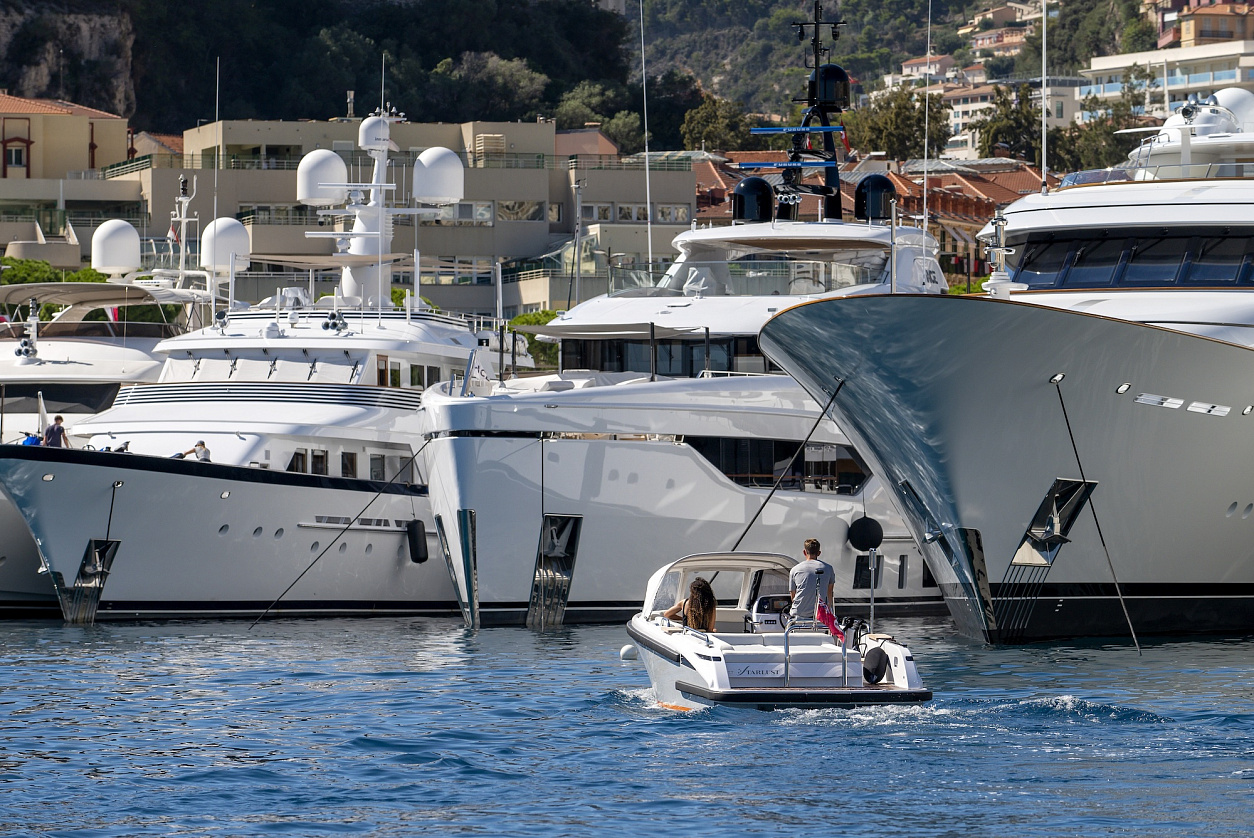
Yachting Guide: what are the most common types of yachts and how they differentiate
Yachts and super yachts
In terms of size, there are yachts, super yachts and mega yachts. This division is unofficial and rather arbitrary, but traditionally superyachts are defined as vessels of 24 metres or more in length, and mega yachts as 60 or 70 metres and more. As there are more and more yachts on the 100m+ end of the market, and some projects reach beyond 200m some people are even considering using the term "giga yacht", but it has not yet become widespread.
Sailing yachts and motor yachts
Based on propulsion principles all yachts fall into 2 big categories — motor and sailing. Those are further divided into various types based on their construction, deck arrangement, equipment and general purpose.
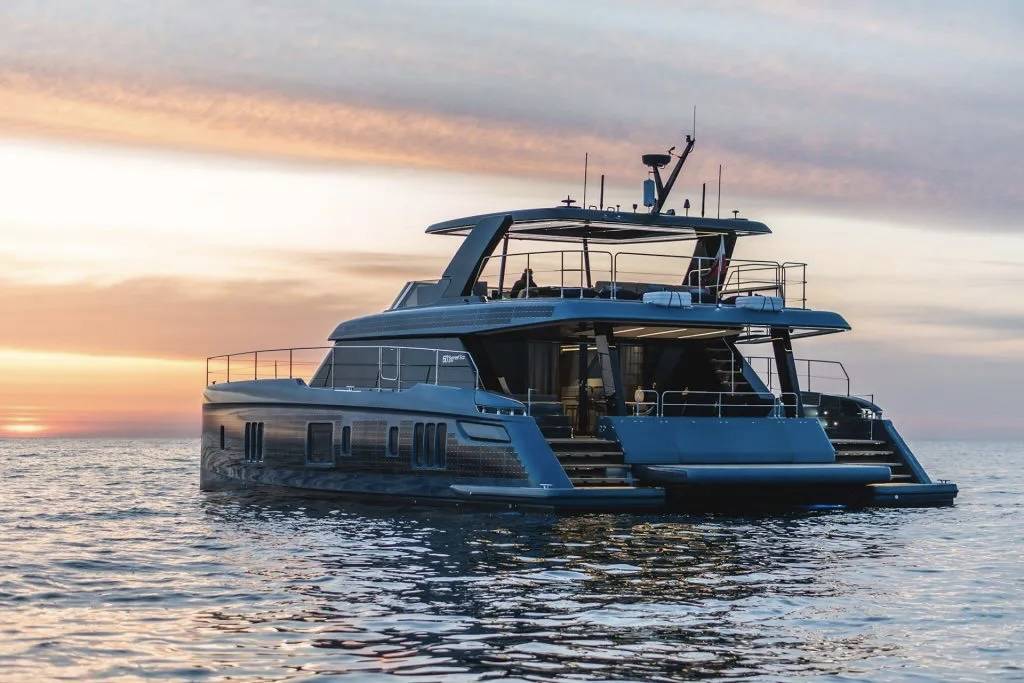
Both sailing and motor yachts can be built as a monohull or a multihull — catamaran or, much less frequently, trimaran. Due to their extremely wide beam, multihulls are less prone to roll at sea or at anchor and offer larger saloons and open decks. In addition, due to the larger area of weight distribution, multihulls have a shallower draft, which is particularly useful when cruising in shallow waters like in Bahamas. However, the cabins inside the hulls of a multihull are cramped and the mooring fee is usually much higher as a catamaran occupies the same amount of space as two conventional monohull boats.
Sailing yachts are distinguished by their sail plan and rig type. Nowadays sloops, ketches and shooners are the most common types of sailing yachts. We will talk about these in detail in a separate article and for now we will focus on motor yachts.
Motor yacht types

More than a dozen varieties of motor yachts exist at present, with some types overlapping the others. For example, a lobster boat may have a flybridge or a hardtop, and trawlers are just one kind of expedition and displacement motor yachts, although they do not always have the characteristics and powers of a true globetrotter.
- - Open yachts
- - Hardtop yachts
- - Flybridge yachts
- - Displacement hull yachts
- - Planing hull yachts
- - Semi-displacement (or semi-planing) hull yachts
- - Expedition yachts (Explorers)
- - Sportfishers (Game fishing boats)
- - River cruisers (penichettes)
- - Lobster boats
- - Gozzo
Open cockpit (open yachts)

Open motor yachts are designed to enjoy speed and sun. With powerful engines and a planing hull, you can visit several picturesque harbours in one day without having to stay in one place for long. The huge cockpit and wide foredeck of yachts like Itama provide plenty of space for sunbathing, partying or a romantic getaway for two. The flip side of the coin is that these yachts are definitely not for bad weather and lack privacy — there's nowhere to hide from paparazzis.
Examples: Riva Dolceriva, Riva Rivamare, Riva Rivale, Itama, Fiart Mare Genius 42
Hardtop yachts

The most common category of boats, on a par with flybridge yachts. The enclosed deckhouse allows the boat to be used in all weathers and provides shelter from spray, wind and sun, as well as from prying eyes. The hardtop also provides more space for navigation, communication and signalling equipment. The deck salon can be closed off by sliding doors or a glass panel. If that is not the case there is an option of a soft awning or a canopy to protect the cockpit from the elements.
Examples: Pershing 7X, Austin Parker 46 Mahon, Zeelander 8
Flybridge Yachts

Flybridge yachts have an additional structure with an auxiliary helm station over the main deck. The flybridge is usually equipped with a seating area and a bar, and quite often there is also ample room to store a small tender or a jet ski along with a crane for launching and retrieving them. The flybridge can be protected from the sun or rain either by a folding bimini awning or a hardtop. Performance style yachts often have a smaller co-called sportbrige instead of a normal flybridge. It is usually equipped with sun loungers and a helm station but lacks additional facilities such as a wet bar or a hardtop.
Advantages of flybridge yachts: the upper helm station gives the captain an unrestricted view, which is important during mooring. For guests, the flybridge is in fact another salon, but completely open. In addition, when the tender is placed on the flybridge, the aft platform remains at the full disposal of guests.
Examples: Ferretti 720, Sunseeker Manhattan 73, Riva 88 Folgore
Displacement yachts

Displacement hull boats travel at a relatively low speeds, ploughing through the water and pushing it away from the hull. The energy requirements for such cruising are relatively low, resulting in low fuel cinsumption and making the displacement hulls ideal for long journeys. The bulky displacement hull provides more stability as well as interior volume. The vast majority of superyachts have displacement hulls.
Planing yachts

Planing yachts glide across the surface of the water with minimal drag and can reach very high speeds. This makes them ideal for fast island hopping and exciting leisure activities on the water. But to reach and preserve the planing mode requires a lot of power, which translates into increased fuel consumption compared to displacement yachts. Cruising in the planing mode is difficult or even impossible in heavy seas, while in the displacement mode a narrow and deep hull is not as efficient and stable as a wide displacement hull.
Examples: Ferretti 580, Riva 68 Diable, Custom Line 106
Semi-displacement (semi-planing) yachts

These yachts have special hull shape, combining the best of both displacement and planing hulls. When travelling in displacement mode at 6-10 knots, they offer comfort and are less prone to roll than planing yachts, but can reach speeds in excess of 20 knots if required. They are designed for clients who want a spacious and sporty looking vessel with less fuel consumption than a planing yacht, but sometimes want to travel faster than a conventional displacement yacht.
Examples: Custom Line Navetta 33, Arcadia Sherpa 80 XL, Custom Line 140
Expedition yachts

Expedition yachts are designed for cruising in remote regions and various weather conditions. True Explorers have a steel displacement hull with a bulbous bow and are built to commercial shipping standards. This implies higher requirements for strength, stability and safety. Explorers can have an ice-class hull, allowing them to cruise in high latitudes among ice floes and even break some ice, which in some cases allows them to do without icebreaker escort in Arctic or Antarctic cruising conditions. In addition to a sturdy hull, Explorers hold large supplies of fuel, water and provisions to ensure long autonomy, as well as garages for tenders, amphibious vehicles, helicopters and other accessories. Sometimes expedition yachts are not built from scratch but rather converted from a commercial or a military craft.
Examples: Legend, La Datcha, Ragnar
Sportfishers (game fishing yachts)

These yachts are specifically designed for bluewater game fishing. They are equipped with powerful engines and a seaworthy hull, water-filled lockers for the catch, a place to secure tackle and a game chair, and a watching tower — a high superstructure above the flybridge from which crew members look out to sea in search of fish. As a rule, these used to be relatively small vessels, but in recent years sportfishers have grown both in size and comfort, in some cases even becoming a special sort of a superyacht.
Example: Royal Huisman Special One
River cruisers

River cruisers are designed to navigate inland waterways — rivers and canals. They have low topsides and overall height, a shallow draft and often a narrow shape that allows them to pass under bridges and in narrow channels. These relatively slow-moving yachts are ideal for quiet cruising in displacement mode. In some countries, a low-powered riverboat such as a penichette does not even require a mariner's licence, making them very popular with tourists who acquire them on a bareboat charter scheme to cruise rivers (e.g. in the Loire Valley in France).
Example: Pénichettes, Linssen
Lobster boats

Lobster boats trace their lineage back to the fishing cabin boats traditionally used in New England to catch lobster. These motor yachts blend comfortable interiors with luxurious finishes, seaworthy hull, a distinctive profile and retro design elements such as wooden rails and planking.
Example: Austin Parker 52 Ibiza, Mochi Craft Dolphin 64, Hinckley 35
Gozzo

Gozzo are traditional Mediterranean boats characterised by a distinctive design with a rounded stern. They are often used for fishing and coastal cruising, combining seaworthiness with a stylish appearance. Some Italian shipyards produce modern, comfortable yachts and tenders with Gozzo styling, such as Apreamare.
Яркие представители: Apreamare 11, Apreamare Gozzo 35
Contact a YACHTING expert for yacht or boat purchases




